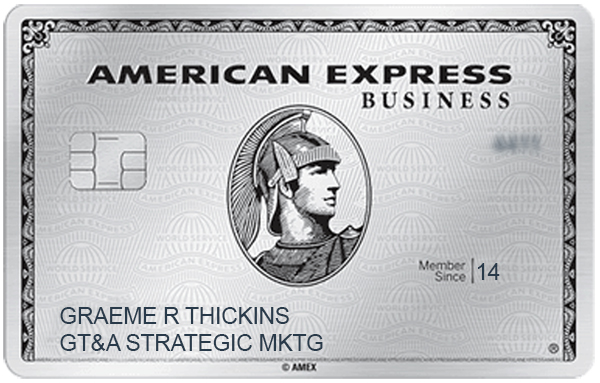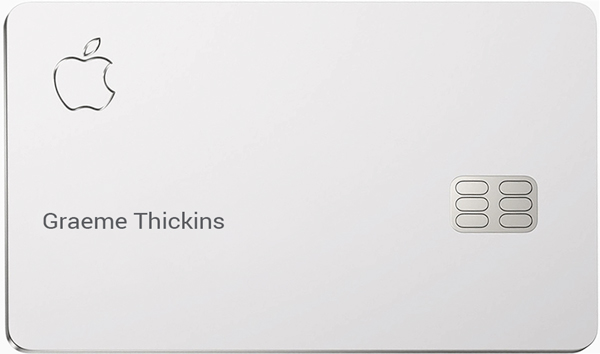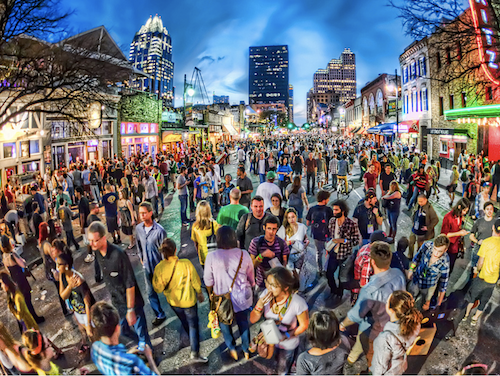(Note: This story originally appeared at Starting Up North. It has been updated to include one more Minnesota tech company that has reached a valuation of more than $1 billion, and another that almost did in 2014.)
Has all this talk about “unicorns” and billion-dollar exits got you down? Doggone it, Minnesota needs some, right? So we can tell our friends in other states, “No, really, we have an awesome startup scene here! We aren’t Flyover Land.” You tell them we have some hot startups going on – you just haven’t heard of them yet. “You just wait – we’ll show you!”
Well, when exactly will we do that? That’s the main question we raise here, as well as why do we want such big exits? And we have some great local leaders who were kind enough to weigh in and give me their take on the subject.
What is an “exit,” anyway? One of three things: it’s when a company sells, has an initial public offering (IPO)… or, um, goes out of business. We’re gonna skip that last one! And the IPO thing we’ll touch on only briefly. We’re mainly talking here about companies getting acquired — by another company (strategic buyer) or a private equity (PE) fund — for multiples of the amount of money that’s been invested in them.
Minnesota Does Okay
First of all, we do have many successful exits here in our state on a regular basis. Granted, not many at $1 billion-plus, at least not what we might consider recent startups — let’s say less than 10 years old. Frankly, there aren’t any here within that young age range that have yet had what we’re defining as a Big Exit. Nor might many people think there will be any, outside the medtech/healthcare sector. Here are seven examples of Minnesota billion-dollar-plus company transactions or valuations in recent times:
• Cray Research was just acquired a couple of months ago by HPE for $1.3 billion. It was founded in Minnesota, sure — but that was 40+ years ago, when Control Data gave Seymour Cray some money to go off on his own. (It still has a presence in our state, and I’m guessing its name is likely to remain on that big building adjacent to the Mall of America for some time.)
• Ceridian, which also still has a major presence in Minnesota, did an IPO in April 2018 that valued it at almost $3 billion. But, again, this is a company that was founded in our state almost 40 years ago as a unit of Control Data.
• ConvergeOne, based in Eagan MN, was acquired by CVC Capital Partners for $1.8 billion in a deal that closed in January 2019. It’s a global IT and managed service provider of collaboration solutions. Founded in 1993, it went public in February 2018 and has more than 2200 employees worldwide, including a few hundred in Minnesota.
• Ability Network, a healthcare company in Minneapolis, was acquired by Inovalon in March 2018 for $1.2 billion. It provides secure web and private networks for healthcare providers and was founded in Minnesota way back in 2000.
• SPS Commerce, a retail supply-chain SaaS company that traces its beginnings to 1987, went public in 2010 at a valuation of $131 million. It now has a market cap of $1.8 billion and employs 1200, more than a thousand of which are based in its downtown Minneapolis headquarters.
• Help Systems, a low-profile IT management company based in Eden Prairie founded in 1982, was valued at $1.2 billion when a private equity firm in Palo Alto CA acquired a controlling interest in 2018. The company has more than 700 employees, about half of which are in Minnesota and neighboring states.
• Proto Labs, based in Maple Plain, was founded in 1999. It grew rapidly, then went public in 2012 at a valuation of $371 million. It achieved a market cap of $1 billion in early 2013 and has stayed solidly above that level since then, with a valuation most recently of about $2.5 billion.
But the fact remains: no Minnesota startup has achieved a billion-dollar exit or valuation in less than ten years from its founding. None has reached the “unicorn” status that’s been so vaunted in recent years. (Whether you believe that matters or not.)
However, one came very, very close in late 2010. That’s when data-storage tech company Compellent was acquired by Dell for a cool $960 million. Yes, we will call that a biggie for Minnesota! It was founded in 2002, so it was a very fast eight years to get to the Big Exit. (And I’ve heard this one created up to three or four dozen millionaires. Not too shabby.)
Another Minnesota firm that almost reached the magical threshold was Digital River, based in Minnetonka. In 2014, it was acquired for $840 million by PE firm Siris Capital (NYC) and taken private. It was one of the original Internet startups in our state and went public in 1998 at a valuation of $142 million. Its valuation today? That’s your guess.
But How Are Other Non-Coastal States Doing?
Let’s get envious now – and talk more recent acquisitions. Some of our fellow Midwestern states have major bragging rights over us when it comes to unicorn-level acuisitions of newer startups:
• Indianapolis’ ExactTarget was acquired by Salesforce for $2.5 billion in 2013. That acquisition has done, and continues to do, great things for that city and state.
• Ann Arbor’s Duo Security was acquired by Cisco for $2.35 billion in 2018. And, of course, the startup community there crowed about what that meant to them.
• Columbus Ohio’s CoverMyMeds was acquired by McKesson for $1.1 billion in 2017. This exit was the biggest in Ohio history.
• Chicago’s Clever Safe was acquired by IBM for $1.3 billion in 2015. It was one of the biggest exits in Chicago tech history and created 80 millionaires.
There have been billion-dollar exits in many other non-coastal cities and towns, too – Raleigh NC, Nashville TN, Lisle IL, and Boulder CO come to mind. You can read about many here, going back over the past decade or more.
Why Hasn’t Minnesota Had Many Billion-Dollar Exits Compared to Other States?
“We maybe have more than many think,” said Jeff Hinck, general partner at Rally Ventures, citing two of the Minnesota company transactions listed above. “And JAMF, which was acquired for a bit under, could sell for that today,” he noted. [PE firm Vista Equity Partners bought a controlling interest in the firm in 2017.] “Compared to the traditional powerhouse states like California, Massachusetts, New York – yes, (we’ve had) far less.” But he thinks we’re trailing other states by not that much. “The reason we have less big exits than some states is that we frankly have fewer startups. Austin, Boulder/Denver, and DC have far more startups, so far more exits. The startups-to-large-exit ratio is probably no different in Minnesota than in those cities — although it is versus those powerhouse states.”
Scott Burns, cofounder and CEO of Structural, sold his previous startup, GovDelivery, in 2016 to Vista Equity Partners (which has rolled it into Granicus). He has a take on why we don’t have more Big Exits: “Investors (here) sitting on a lot of upside are more likely to take an exit before the billion-dollar threshold. I do think we should take more credit for what we have, however. Look at SPS Commerce, which has somewhat quietly grown into a company with a $1.8B market cap.”
Michael Gorman, a managing director at Split Rock Partners, points out our state represents only about 1.5% of the U.S. population. “On most measures, we punch well above our weight based on the level of education, corporate depth, and so forth.” He brought up another local company to watch: “Bright Health has recently raised significant money — not yet an exit — at a healthy valuation, but I don’t know the exact figure.” That firm, plus the recently acquired JAMF, and the Minnesota billion-dollar exits we cite above “collectively still employ thousands of people in Minnesota and have generated great wealth and opportunity,” Gorman added.
So, Why Do We Want Big Exits?
I asked Justin Kaufenberg, cofounder and CEO of SportsEngine. His firm was acquired by NBC Sports in 2016 for an undisclosed – let’s just say “large” – amount: “It takes decades to build an ecosystem capable of growing unicorns,” he said. “You need a round of exits for first-time founders, who then go on to participate in the funding or building of the next round of companies. That second round then enjoys more seasoned founders and executives and more aggressive and patient investors.”
Similar comments came from VC Michael Gorman. [Note: his fund has been an investor in SPS and Help Systems.] “Great exits help reinforce the virtuous circle of innovation, whereby talent is developed, wealth is created, and the innovation capacity of the region is enhanced,” Gorman said. “When a company generates a great exit, it helps the immediate employee beneficiaries and creates additional financial freedom to pursue the next entrepreneurial impulse.”
What Do Other Midwestern States Have That We Don’t?
One M&A professional in Minneapolis had some pointed words in this regard. Rob Griggs is a regional VP for Seattle-based Corum Group, a 30-year old firm focused in sell-side M&A, primarily for small to mid-sized software firms, with more than 300 successful transactions to date. He gives tech-based M&A presentations multiple times per year in fourteen cities across the Midwest. In his previous life, Griggs raised significant funding for multiple startups. “My take is that, locally, we don’t have the focused approach that many of these communities have from universities, incubators, angel investors, successful entrepreneurs, and corporate VCs leveraging resources to build a thriving early-stage investment cycle. When you have even local government assisting, the returns, rewards, and community growth follows. Here, we just don’t have that approach, sadly, in my experience.”
Scott Burns offered a Midwestern example he’s familiar with: “Structural has an office in Indianapolis, so I spend a lot of time there. It had a terrific exit with ExactTarget building up there, executing a successful IPO, and then being sold to Salesforce for $2.5B… this infused a lot of capital and talent into the local tech ecosystem that’s led to a surge in tech startup activity and to a large Salesforce office in town, as well as satellite offices for other companies with headquarters elsewhere.”
Well, yeah, we could use some of that here!
Minnesota Angel Investors Stepping Up?
Are Minnesota founders who have had successful exits doing as much angel investing as their counterparts in other Midwestern cities?
“Not that I can see,” said Griggs. “The few I know pretty much leave town with their cash, more or less. They lose their appetite for risk once they get theirs, unfortunately. A few do a couple of deals, but I don’t see a strong mentor network, or aggressive angel network like I’ve seen in other parts of the country. Cincinnati and KC are very strong at local support.”
Scott Burns has a refreshingly different view. “I’ve seen a surge in founders with successful exits investing locally… putting money back into the community. I don’t have benchmark data to compare us to other communities, but I like the trend in the Twin Cities.”
There’s Something Crazy About Startup Funding These Days
Dave Dalvey, managing general partner at Brightstone Venture Capital, cites some startling figures. “We’re living in a capital marketplace with record high amounts of uninvested capital held by PE and VC funds looking for high-quality investments. The amount of capital raised and as-yet uninvested is referred to as ‘overhang’ or ‘dry powder’ in the industry. According to a recent report, the entire PE industry has more than $2 trillion in dry powder, with $1.2 trillion of this being held by PE buyout-style funds, and just over $400 billion in the hands of VC fund managers.” Most of this overhang lives in two geographic areas, he said, where the competition is particularly tight: the Bay Area and the New York/Boston corridor.
“History has proven that market environments where too much money is chasing too few deals is never a good thing for investors and their ultimate fund returns,” Dalvey continued. “Investors fearful of missing the next big deal throw everything they learned in business school about valuation out the window and buy into this trend towards unicorn pricing without much fundamental valuation support.”
All these competitive market factors, he said, “help build and feed the unicorns on the front end, and keep them fat and happy through the early years of their little unicorn lives — and even through their IPO years.” And he noted we’ve seen close to a dozen unicorn IPOs already in 2019. However, the number of IPOs overall is way down, so that route to an exit would appear to be unlikely for most.
Another surprising fact Dalvey cited, from the Pitchbook/NVCA Q2-2019 report: VC mega-deals (raises of $100 million or more) rose to 208 deals in 2018, or 44% of all deal volume. In 2013, there were just 36 mega-deals, or 13% of all deals. Yikes!
But Maybe We Shouldn’t Be Focusing on Unicorns and Billion-Dollar Exits
Joe Payne is the CEO of Code42. Previously, he led Eloqua to an IPO and, soon after, an acquisition by Oracle in 2013 for close to a billion dollars. “For starters, if you’re building a company, you’re not trying for a billion-dollar exit — you’re trying to build a great, lasting company with a billion-dollar valuation. It’s a subtle but important difference. Minnesota has plenty of billion-dollar companies across many industries that started as nothing and are now worth that kind of money. There is much to be proud of. What the state needs now is to replicate that historical success and apply it to technology companies.”
Another local player doesn’t pay much attention to all this billion-dollar talk. Cathy Connett, an angel investor and managing partner of Sofia Fund, said this: “We may not have had as many billion-dollar exits, but it’s important to look at exits generally in light of the amount of money raised to achieve those exits. First, you need to remove the ‘unicorns’ from the data set. Almost a third of the monies raised nationally in 2017 went into a few unicorns, which are driven largely by hype and are on the coasts. If you look at the data after the unicorns are removed, I think a big factor is our more efficient use of capital in Minnesota. Considering the money invested in Minnesota companies and the cash-on-cash return achieved on that money, you’ll find our companies perform on par, if not better, than other areas.”
Are Tech Company Valuations in Minnesota Simply Lower Than in Other Midwestern States?
“Not at all,” said SportsEngine’s Kaufenberg. “I don’t think there’s any real difference across the country right now. The best companies are all raising money in a fairly predictable and narrow band of valuation, and those deals are competitive.”
VC Michael Gorman agreed: “It’s not my experience that tech valuations in Minnesota are systematically lower. Strong teams and ideas have attracted capital at market rates here.”
I asked Kaufenberg if he’s seen any trend in the valuations of tech companies based in Minnesota. “There’s a lot of competition for the best companies,” he said. “Those growing at 300% in the early stage and 100% in the growth stage are having their valuations pushed up to historic levels. However, that next tier of companies can have a harder time, and valuations in that cohort feel as though they’ve actually come down across the country.”
Scott Burns had a comment in this regard: “We might get slightly lower valuations at the early stages, but even that fairly reflects the fact that we have fewer entrepreneurs with big exits in their past starting new ventures here.”
Will We Have More Billion-Dollar Exits in Minnesota in Coming Years?
Michael Gorman of Split Rock Partners believes so. “We will to the extent we have companies playing in very large markets, led by excellent teams, boasting tech that leads the category, and demonstrating extraordinary growth and/or substantial profitability.”
Jeff Hinck of Rally Ventures didn’t hesitate: “For sure – we have a couple that are already capable of that. We have a lot more that could be, and it will depend on execution and valuation environment at the time of the exit.”
A former VC who was just named head of the Minnesota High Tech Association (MHTA), Jeff Tollefson, had this to say: “While it would clearly benefit Minnesota’s economy to have more billion-dollar exits, I think we will see many more successful singles and doubles rather than big home runs, with exit values in the hundreds of millions, not a billion… Will we see more of those big exits? Absolutely. But I would much prefer seeing dozens of companies achieving nine-figure valuation exits each year and catalyzing future waves of entrepreneurial success in the process.”
Joe Payne, the CEO of Code42, also thinks we’ll have a number of winning companies with billion-dollar valuations. “There’s one mind-shift change that will help Minnesota companies be successful more quickly. Because technology is portable and doesn’t need to be ‘shipped’ in order to win, you must be the best in the world in your space. That’s a mind-shift change for many in the Twin Cities. You can’t be best in Minnesota or best in the Midwest — you have to set your sights higher. You have to be the best in the world.”
No denying Payne has ambitions. “Given our fantastic customers at Code42, our market-leading products, and our world-class team, we have a very good chance to be a billion-dollar company in the next few years.”
Something More Important Than Money?
I asked Jeff Hinck how equity should be structured in order for a big exit to truly have the impact we want in our community. He had this to say: “A sizable number of people should have equity, especially early employees who take more risk joining a startup. If someone does well in a startup, they’re more likely to start one themselves, join another, or recommend to friends asking if they should join startup to go for it. That said, I think more of the reward of being part of a startup is usually the atmosphere and culture of the good ones. It’s just more fun. And what’s better than having fun and being paid more for it?”
So, remember to add that three-letter word when you’re bragging to your friends about the quality-of-life in Minnesota – and that only gets magnified when you’re part of a great startup!
The question now is, are you working in one — or on one — yet?








Recent Comments